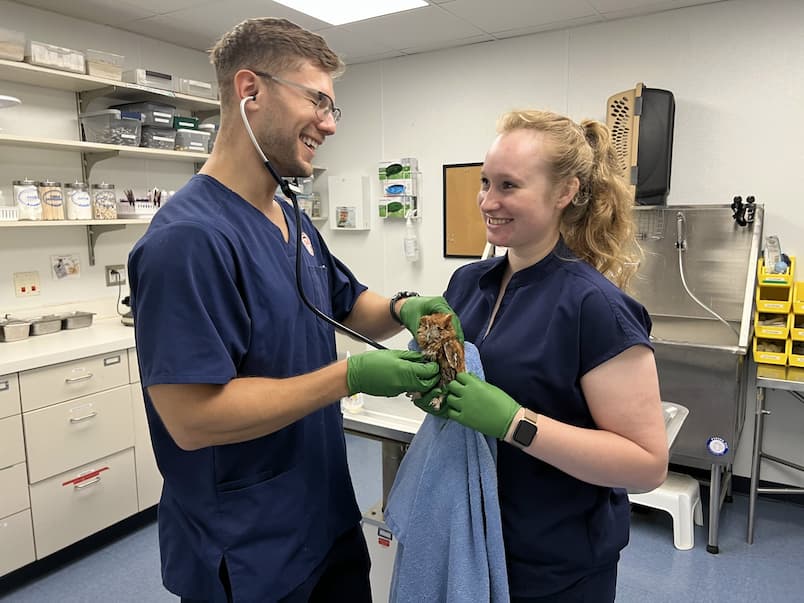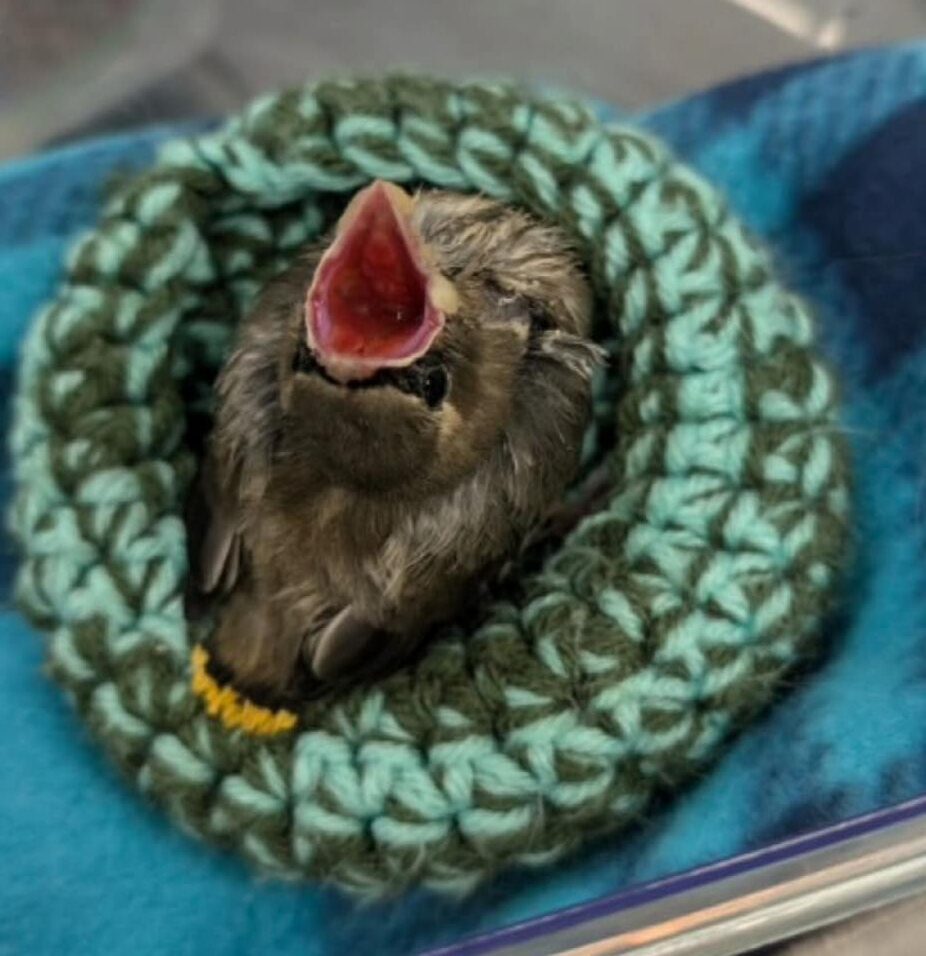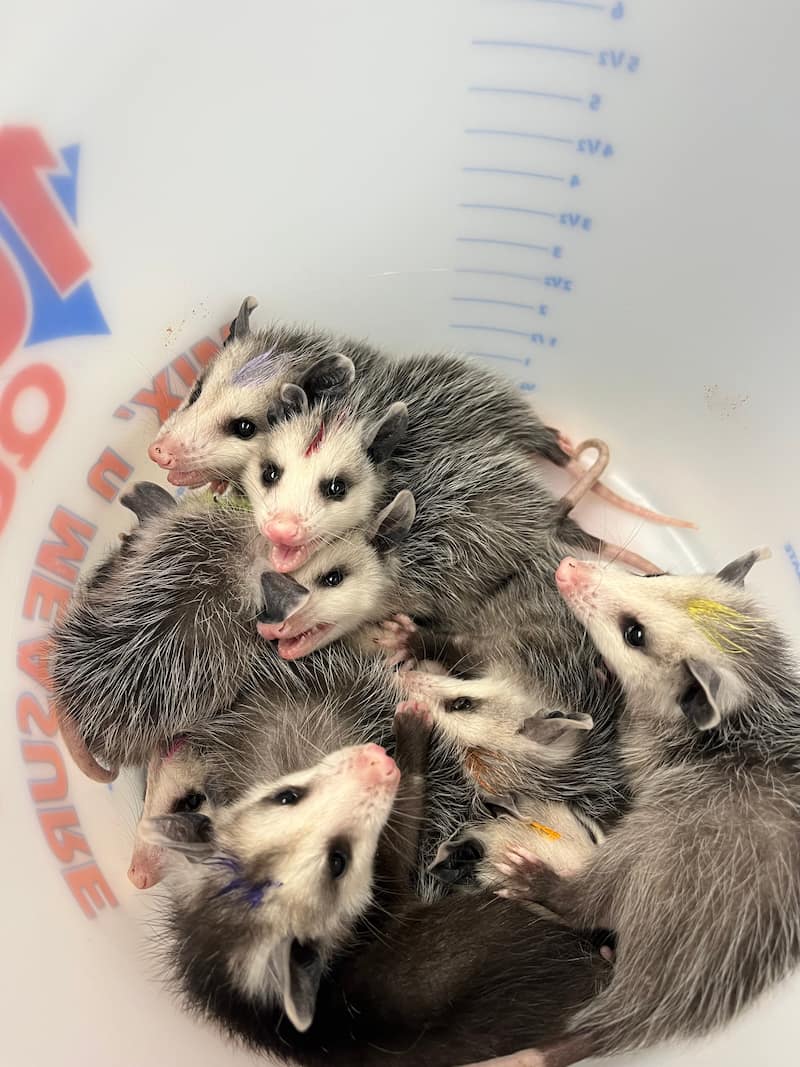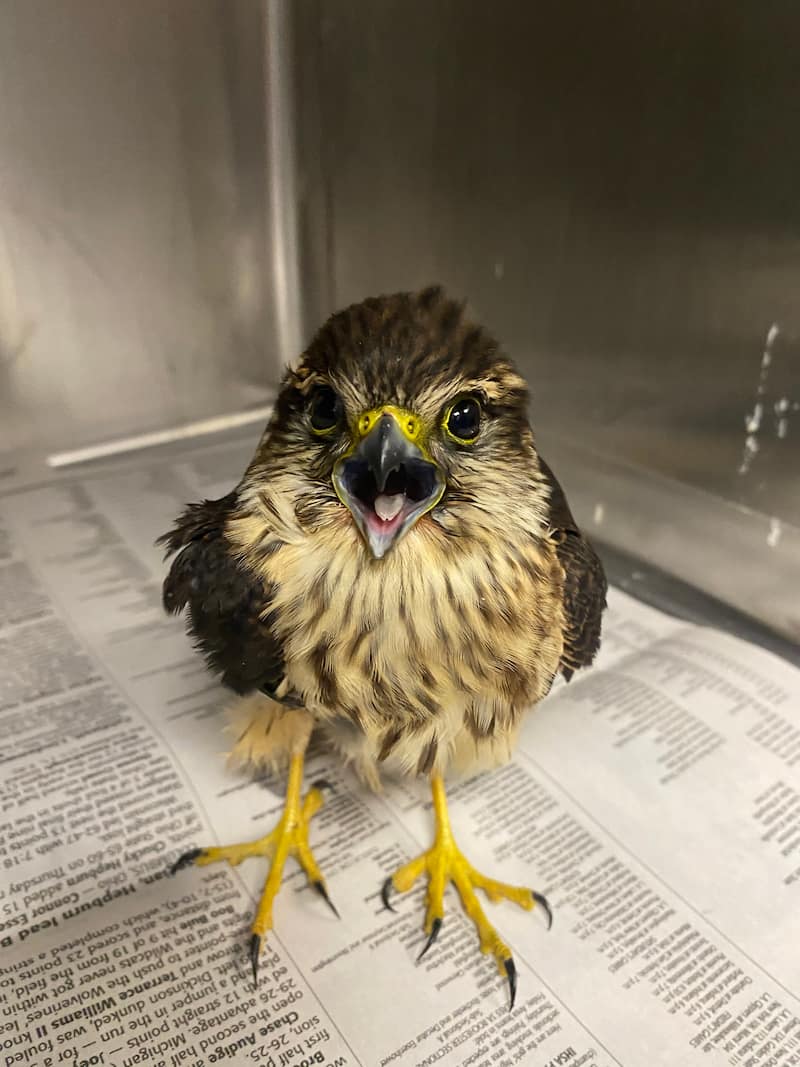Steps to take if you are concerned about wildlife.
At the Wildlife Medical Clinic, we frequently get calls and emails asking how to help the amazing wildlife in our community. Thank you for caring; we couldn’t do this without you! If you are concerned about an animal that you saw but aren’t sure what you should do, here are some steps you can take!
Is the animal actually sick or injured?
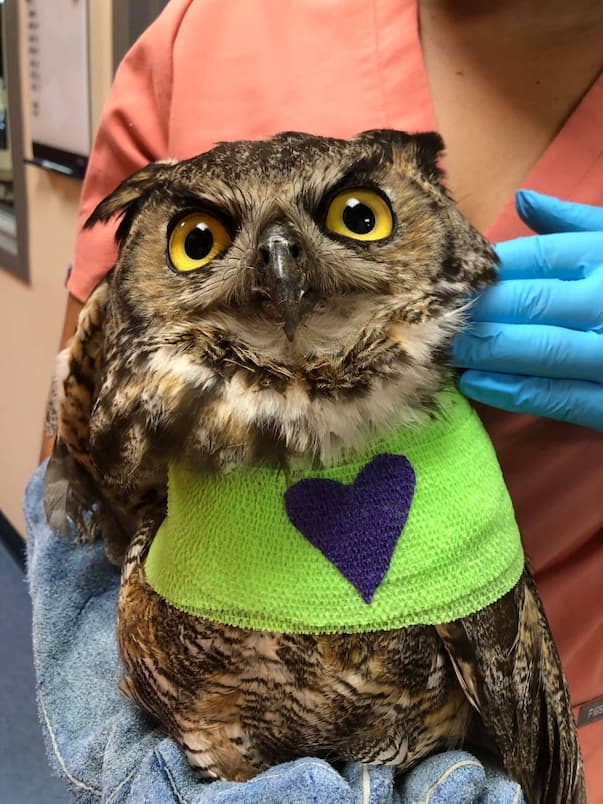
Generally, wild animals should be scared of humans, so they will normally want to keep their distance or run away if humans are nearby. If an adult animal doesn’t want to escape and hide when you approach it, this is NOT normal behavior. In animals, an observation of a behavior change is often one of the first signs (besides unwillingness to eat), that an animal isn’t feeling well. This animal may be sick or injured and should therefore be brought to us if you are able to do so!
Additionally, physical injuries are quite common in wildlife. A bird striking a window or a squirrel getting hit by a car will likely have serious injuries that require medical attention to ensure survival.
If you can, safely pick up the animal with a blanket (always wear gloves if you have them), put it in a box, and bring it to us!
Is the baby REALLY an orphan?
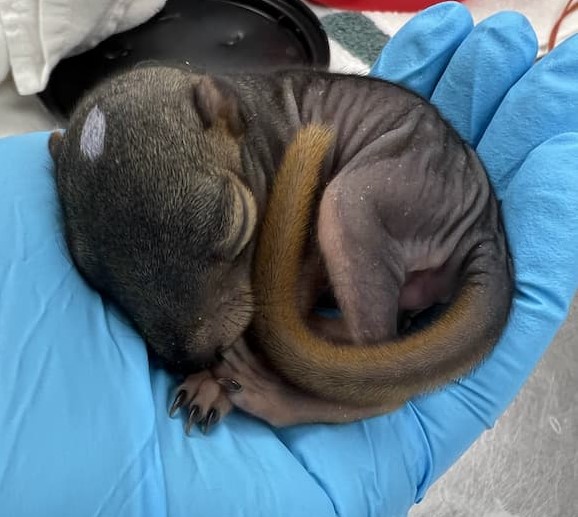
Just because a baby animal is found alone doesn’t mean it is an orphan. Some animals, such as birds, will be close by but not right near their young. Also, when these youngsters leave their nest, they are not great at flying and may look injured because you only see them hopping on the ground. If you observe them from a distance, you will usually see mom and dad feeding them and in a couple days, they should be better at flying and will be on their way.
Then, some wild animal moms, like rabbits for example, only return to their babies twice a day, once in the morning and once at night. Therefore, if you disturb a bunny nest while mowing the lawn, and see no mom nearby, it is likely the mom is just out looking for food. It is important to note that since rabbits are scared of humans and view us as threats, you must not hover around the nest or the mom will not want to return. However, if you would like to double check to ensure that the mom has returned later on, lay some leaves and sticks over the den and return into your house. The next morning, check the den; the leaves and sticks will have moved if the mom returned that night.
If the babies are indeed orphans, you can find a licensed wildlife rehabilitator near you. You can also bring them to us if a rehabilitator can’t be found or if you are concerned that the baby may be in need of medical treatment.
If in doubt, call us!
If you have questions or concerns, our volunteers are always more than happy to talk to you! Our contact information is wmcchair@vetmed.illinois.edu or 217-244-1195.
Written By: Aimee, Class of 2025

